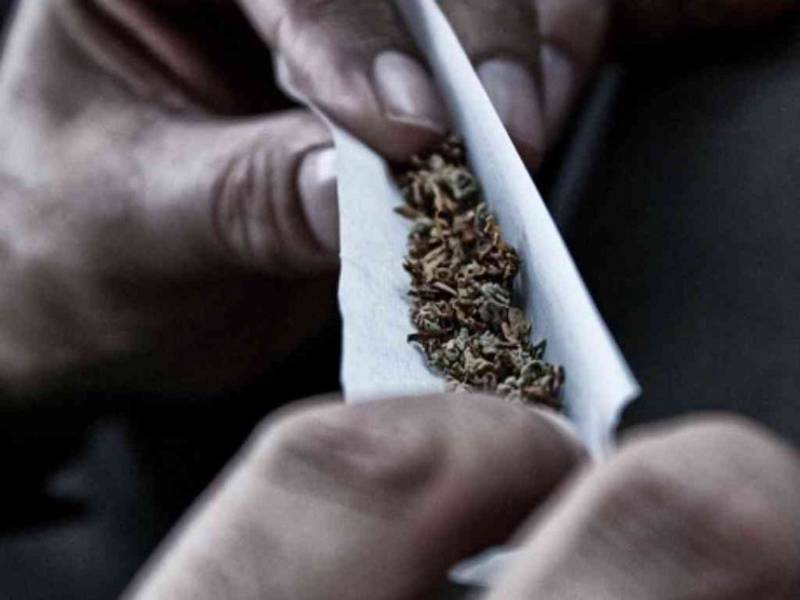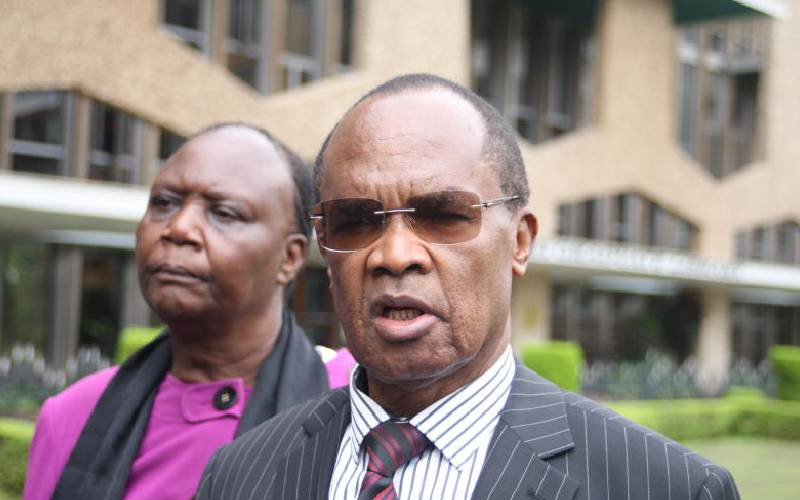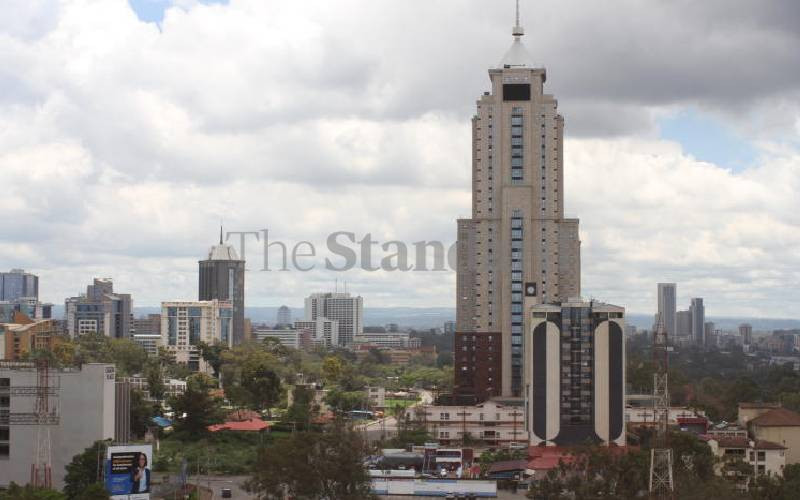
Trading Centres along the Kenya- Ethiopia border are the new entry points of a variety of bhang that is widely grown in southern Ethiopia, The Standard has established.
Moyale town, the largest of the trading centres stands out as the capital of contraband that includes smuggling of Kenya’s popular variety of bhang called shashamanne.
Apart from Moyale, other border points used by the crooks to smuggle in Ethiopian bhang include Sololo, Uran, Forolle and Dukana.
Multiple security sources in upper Eastern told The Standard that dealers use peddlers to bring the bhang into Kenya in small batches using unofficial or unpatrolled routes to smuggle in the contraband especially at night to these centres, with Moyale town accounting for more than 75 per cent.
In Moyale, Biashara Street and Heilu are major transit points of the entry from Ethiopia.
Light vehicles, boda-boda, donkey carts and couriers are used to sneak in the cargo undetected along the border.
It’s from these centres that the bhang is transported all the way to Nairobi using two different routes ---the direct Moyale-Nairobi highway via Marsabit town and Isiolo and the unofficial route, a cutline that runs from Funannyata in Sololo to Yamicha plains of Merti sub-county in Isiolo.
Route One, which our sources described as direct but risky is used by the well-connected networks with deep pockets.
The source, a police officer based in Moyale, confided that the cargo is loaded into vehicles in Moyale town --- the preferred model being sturdy Toyota Land-Cruisers and transported through Marsabit town, Isiolo, Nanyuki and onwards to Nairobi using the A2 highway, a distance of 775 km or about 10-hours drive.
‘‘The route has been less used in recent past and almost dying since heightened security along the highway and the subsequent introduction of curfew (in March due to Covid-19 pandemic). Also, due to the risk involved many smugglers have resorted to the alternative route,’’ said our source.
The smugglers, among them top businessman in the region described by multiple sources as multi-millionaires bribe security officials for their vehicles to pass through nearly 12 police barriers before reaching Isiolo town after passing through centres in Marsabit and Samburu counties.
This route is also used by trucks and buses; with the latest know case (of arrest) being between last December and this February.
However, the source adds; ‘from mid-March, majority of the well-connected have started using the second route due to beefed up security along the highway’’.
Route 2 which is longer and chracterised by rough terrain handles cargo for the majority of the dealers who cannot afford to use the highway.
Stay informed. Subscribe to our newsletter
The route is longer than the first one by about 150km and would take twice the time to reach Nairobi.
From these centres in Marsabit County, the consignments are ferried mostly by boda-boda riders and cars to Funannyata, a small trading centre in Sololo sub-county from where the bhang is loaded into four-wheel-drive vehicles destination being Isiolo town.
The smugglers said a driver well familiar with the route uses the unpatrolled cutline than runs along the Marsabit-Wajir and Wajir-Isiolo borders to evade police barriers along the highway.
‘‘From Funannyata, the vehicles pass through unoccupied areas or grazing field before reaching Yamicha in Merti (Isiolo county),’’ said the driver.
The vehicles would pass in the bush near Shuur (in Marsabit) and Yamicha (Isiolo), all trading centres that serve herdsmen grazing in the area.
To beat traps laid for them on the border cutline routes, smugglers use a number of peddlers who use boda bodas to ferry the bhang in small quantities from Funanyata in Moyale through Shuur in North Horr to Yamicha in Isiolo's Merti sub-county.
"As many as 50 motorbikes can be used to take bhang over a distance of about 400km between Funannyata and Yamicha," another source familiar with the route revealed.
From Yamicha, both our police and civilian sources revealed the vehicles pass through unmanned grazing zones of Quro Bisanowo, Sabarwawa and Kom in Merti before either diverting through Lososia to Archers Post (Samburu) or Gotu (Isiolo) and onwards through centres in Igembe Central (like Gachuru and Shab) and Tigania East before both routes connect to Isiolo town.
Those lucky to reach Gotu and Lososia, more often than not manage to reach Isiolo town and thereafter Nairobi.
This route is recently the most preferred as the traffickers would avoid numerous roadblocks along Isiolo- Moyale highway.
Even with the closure of the Kenya-Ethiopia border, bhang from Ethiopia still finds its way into the country.
‘‘The border had been closed, Kenya and Ethiopia are both guarding their sides to check movement of vehicles and people and in Kenya there is dusk-to-dawn curfew but we still have the drugs coming in,’’ said the police source.
In the last two weeks, three vehicles, all which came through Merti had been seized with the narcotic.
Two weeks ago, two people were arrested with Sh1.5 million worth of bhang in a Toyota Prado in Isiolo town and charged in an Isiolo court.
A fortnight ago, five people among them a GSU constable and a sergeant based in Mariera camp in Igembe Central, Meru County were arrested with 600 kg of bhang worth Sh15 million by multi-sectoral security team including the army based in Archers Post.
The haul was in a GSU LandCruiser pick up and a private Toyota Prado.
Last Thursday, a vehicle that managed to pass through several roadblocks in parts in upper eastern including Meru (Igembe Central and Tigania East) was seized in Makuyu, Muran’ga County with bhang with a street value of Sh 14.5 million.
A Moyale trader with a fake identity card of Isiolo county government posing as a nurse and a driver from Isiolo were arrested with the haul and are being probed by anti-narcotics officers in Nairobi.
Lately, smugglers perhaps emboldened by the lucrative returns and a way of avoiding heightened security had resorted to using GK vehicles.
Apart from the Meru GSU vehicle that was reportedly hired by the smugglers, others include last December's arrests at Lerata where car assigned to Marsabit GK prison and another one from the Administration police a month earlier were used.
Others are an Administration police vehicle near Archers Post attached to a station in Wajir and an ambulance from a county in North Eastern.
More than 10 security personnel are facing charges in courts in the region.
Trafficking had been low since mid-March as both Kenya and Ethiopia closed their borders following the outbreak of novel coronavirus that also curtailed the activities of the smugglers.
According to Marsabit County Commissioner Evans Achoki, the State used soldiers from Odha military camp in Moyale to dig trenches along illegal entry points at Heilu and Biashara Street to check movement of entry of people and contraband to and from Ethiopia.
Mr Achoki, who recently assumed office said the smugglers no longer use the highway due to beefed up security while patrols are also done in other centres along the border to check entry of aliens and smuggled goods including bhang.
Both Isiolo County Commissioner Herman Shambi and his Marsabit counterpart acknowledge that the crooks use the cutline route that mostly have no settlement areas and patrols are minimal.
Arrests, the officials said had been made on many occasions including the latest two in Isiolo even in the unofficial routes used by the smugglers.
"We were waiting for them for the last three days and we knew in advance the route they would use," said Mr Shambi during of the arrest and seizure of two GSU officers and the GK vehicle.
MPs Rehema Jaldesa (Woman Representative) and Hassan Oda (Isiolo North) decried the smuggling and usage of bhang in the region urging the Interior CS Fred Matiang’i and DCI boss George Kinoti to urgently address the menace.
‘‘The members of security committees, especially the police in the region had failed in their work and both Matiangi and Kinoti should crack the whip,’’ said Ms Jaldesa.
Jaldesa questioned where bhang exhibits are taken adding there had been no known public burning of the drugs seized from suspects.
The chairman of Isiolo County Parents Association chairman Ismail Galma and local branch of Council of Imams and Preachers of Kenya (CIPK) Haji Hassan Bonaya said there was widespread usage of drugs among youth and others being used as peddlers by the cartels.
Background of origin of Shashamanne brand
The brand, according to locals on both side of the border acquired its fame as a result of Ethiopia’s unique and brotherly relationship with the Caribbean island of Jamaica.
According to Guyo Lencho, a Moyale resident with relatives in southern Ethiopia and a group of Rastafarians from Jamaica had come on a pilgrimage to that country during the reign of its Emperor, the late Haile Selassie.
Rastafarianism is derived from Ras Tafari which was also Emperor Haile Selassie's name and from which Jamaicans have crafted a religion.
After meeting the Emperor in Addis Ababa, the youth said the pilgrims visited Shashamanne trading centre in Ethiopia's Region Five where they stayed for months.
"They (Jamaicans) came with their own stuff (bhang). They are the first ones to grow it in the area," said Lencho.
To date, the story on both sides of the border is that the Jamaican bhang grown first at Shashamanne is the same as the one cultivated in the Caribbean island.
"This is why bhang from Ethiopia, which had long been introduced in other regions of the country adopted this (Shashamanne) name," revealed the young man.
Lencho says; "it’s a very strong and smooth brand compared to other types grown in Kenya".
Further interviews revealed that Kenyan smugglers had realised that consumers prefer Shashamanne to other local brands including those from Uganda and Tanzania.
"Previously, the lucrative businesses included human trafficking, smuggling of gold and copper and uncustomed goods from both Ethiopia and Somalia. Today, it had been overtaken by bhang," said a police source in Moyale.
 The Standard Group Plc is a
multi-media organization with investments in media platforms spanning newspaper
print operations, television, radio broadcasting, digital and online services. The
Standard Group is recognized as a leading multi-media house in Kenya with a key
influence in matters of national and international interest.
The Standard Group Plc is a
multi-media organization with investments in media platforms spanning newspaper
print operations, television, radio broadcasting, digital and online services. The
Standard Group is recognized as a leading multi-media house in Kenya with a key
influence in matters of national and international interest.
 The Standard Group Plc is a
multi-media organization with investments in media platforms spanning newspaper
print operations, television, radio broadcasting, digital and online services. The
Standard Group is recognized as a leading multi-media house in Kenya with a key
influence in matters of national and international interest.
The Standard Group Plc is a
multi-media organization with investments in media platforms spanning newspaper
print operations, television, radio broadcasting, digital and online services. The
Standard Group is recognized as a leading multi-media house in Kenya with a key
influence in matters of national and international interest.






